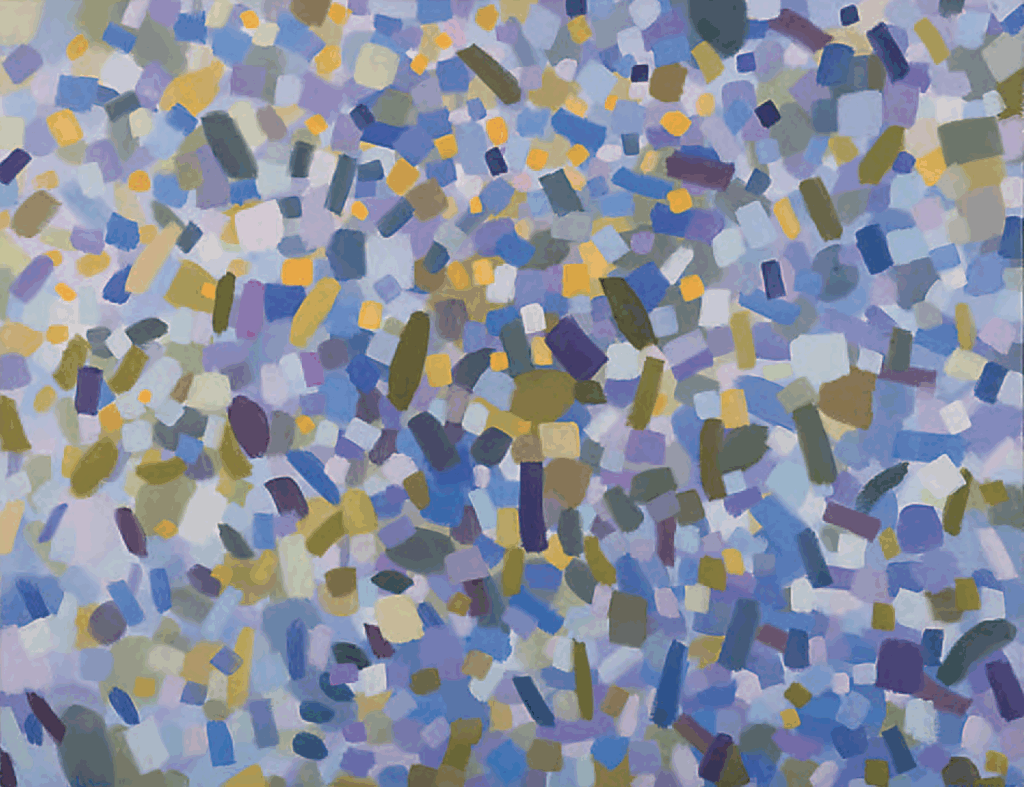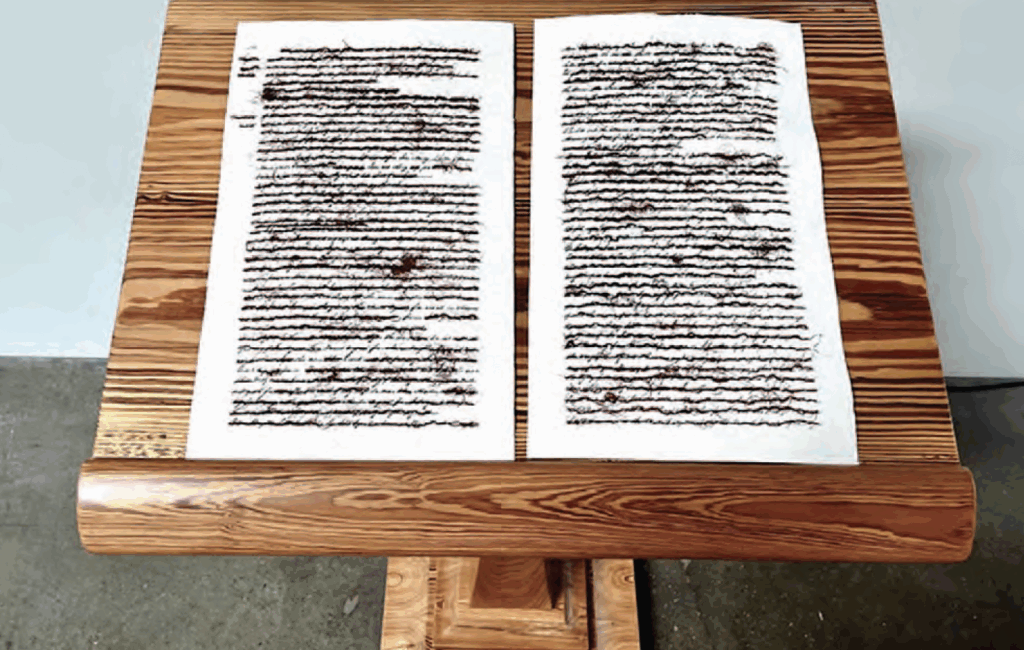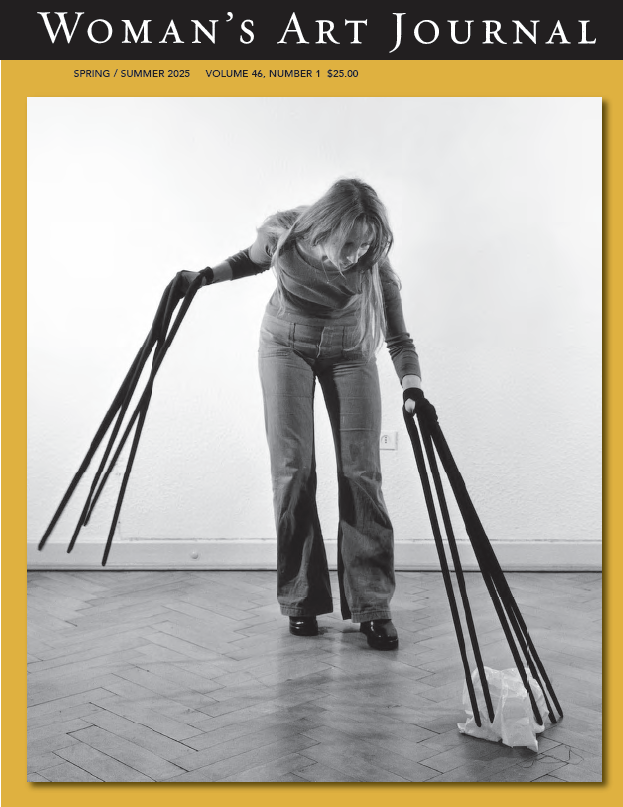Institutional subscribers can access this issue at the Old City Publishing website. The issue is available for purchase in print and digital (PDF) format. To subscribe to WAJ, click here.
Featured image on the WAJ homepage: Yo-Yo Lin, channels (2022), courtesy of artist Yo-Yo Lin. Photo by Ahad Subzwari (courtesy of The Shed).
The lived experience is the unifying concept of Woman’s Art Journal’s Spring/Summer 2025 issue. All four articles chronicle artistic practices and worldly relationships as a methodological lens reflecting heightened aesthetic and subjective spaces of sexuality, reality, abstraction, and biography. Rebecca Horn’s prosthetic body extensions, employed in her 1972 performance Finger Gloves, on our front cover, center radical infirmity as her lived experience in the new field of disability studies and disability art history, charted in Amanda Cachia’s extraordinary feature essay. Having coined the term “hospital aesthetics” to prescribe habitable and hospitable stations for chronic illness and “preponderances of pain” that counter traditional measurements of medicine and therapy, Cachia presents disabled artists Yo-Yo Lin and Jenni-Juulia Wallinheimo-Heimonen, amongst others, as contemporary heirs to Horn’s earlier artistic visions in the
pursuit of an expansive language of infirmity.

x 43 1/4”. Made for Möykky Club, 28 August 2020, hosted by Nuoren Voiman Liitto at Suvilahti, Helsinki, dress, film stills and
copyright: Jenni-Juulia Wallinheimo-Heimonen.
Johanna Amos’s article on the Bayard Memorial, dedicated in 1907 near the Delaware Art Museum, challenges the stated purpose of public memorials to historical male figures, their power and promise as permanent landmarks of glory. More interesting than the “life of the sculpture” is Amos’s focus on the sculptor herself: Euphrosyne “Effie” Stillman, a British-American artist working in the late nineteenth century, and her correspondence with the Delaware art collector and patron, Samuel Bancroft, Jr. Recounting the memorial’s presence through the lived experiences of a young woman sculptor brings an entirely new perspective to the competitive politics around public commissions and, most revealingly, to Stillman’s own ambitious artistic training and aspirations. The memorial’s lasting impression is, in fact, a “testament to women artists’ perseverance.”
The timely article by Rachel Winter on Palestinian artist Samia Halaby, born in Jerusalem, challenges her marginalization from Palestinian art histories and the broader exclusion of Arab diaspora artists from the canon of American art. Halaby’s paintings reverberate with her language of abstract picturing, universal and local depictions of reality through her general principles of experiences, and her distillation of abstraction to the essential attributes bridging art and daily life. These connections, Winter argues, communicate “living cultural processes” through global and local notions of place and space. Halaby’s abstractions are discussed across the geographical axes of Palestine, New York, and the Midwest, but their roots are securely fastened to the Arab world.

Halaby, New York.
Luke Williams conveys the labyrinthian histories of slavery and the calculated template of the Black figure in contemporary art markets in his forceful presentation of multidisciplinary artist Trina Michelle Robinson. By embracing archival and nonperformative strategies in printmaking and video that redact and abstract her own family’s reckoning with enslavement, Robinson denies the viewer’s expectations of Black representation, instead emancipating herself and her audience “toward freedom sought in the kink, the fugitive, [and] the otherworldy.” Through fabulation, glitch, and nonperformance, Robinson accesses “the lived experiences of her ancestors.”

collected from Senegal, charred cedar, bone black dry pigment, sisal dyed with hibiscus from Senegal, raw cotton paper
sourced from a Black-owned farm in North Carolina. Courtesy of the artist.
Our illustrious new book reviews editor, Melissa Mednicov, has successfully begun her tenure at WAJ, succeeding Alison Poe who graciously guided this issue’s early development, and supported by Erin Devine and Sierra Holt. Ana Vivoda engages the distinctions between the terms decolonial and post-colonial in art and textile in her review of a “pluriversal,” anti-racist educational research study critiquing hegemonic white feminisms. Mickalene Thomas exercises bell hooks’s inspirations on love, vulnerability, and eroticism, a love letter and “love ethic” to queerness and Black women, in a recent survey catalogue discussed by Grace McCormick. The art, writing, teaching, curating, and Black feminist activism of Howardena Pindell are presented in two significant books, covered by crystal am nelson, where surface tension, abstraction, materiality, and collage work in unison to reveal the artist’s political position and past, haptic creative strategies argued as “Black feminist modernisms.” Emma Oslé considers the vernacular language of Latinx abstractionist Virginia Jaramillo, based in Los Angeles, whose painting series undulate and vibrate with the “force of fighting colors” to engage directly with the environment. Roja Najafi undertakes two reviews about postwar women Abstract Expressionists, the first addressing the formation of a singular art collection, the second strategically expanding the reach of gestural abstraction to global geographies and movements beyond a Euro-American framework.
Ruth Asawa’s captivating drawings are given equal attention to her hanging looped-wire sculptures, “drawings in space,” in a joint review by Mark Bloch, one a fascinating graphic novel that retells the artist’s troubling yet mesmerizing biography in innovative ways. Nancy E. Green covers a magisterial exhibition catalogue on Sonia Delaunay, showcasing a “living art” that dissolves boundaries between modern life and art in form and color. Disregarding Vasari’s ideas of creative male genius to recover anonymous labor and collaborative networks, mostly female, Elizaveta Kushnareva’s review reveals women’s vast contributions in painting as well as lacemaking and needlework, among other neglected arts, from the early Renaissance to the early modern period. Claudia Goldstein explores a comprehensive monograph on seventeenth-century Dutch botanist Agnes Block, whose troves of scientific and horticultural knowledge, cultivated self-fashioning, and meticulous collection of botanical watercolors place her firmly in the revisionist histories of Dutch Enlightenment.
Joan Marter and Aliza Rachel Edelman
Editors, Woman’s Art Journal

Spring/Summer 2025
Parallel Perspectives
p. 2
Joan Marter and Aliza Rachel Edelman
Portraits, Issues and Insights
p. 3
A Firm Infirmity: Extending Rebecca Horn’s Prosthetic Aesthetics to Disability Studies
Amanda Cachia
p. 14
“The Penalty of My ‘Woman’s Work’”: Euphrosyne Stillman and the Bayard Memorial Commission
Johanna Amos
p. 25
Placing and Spacing Abstraction: The Life and Work of Samia Halaby
Rachel Winter
p. 37
Trina Michelle Robinson: Black Figures Out of Focus
Luke Williams
Reviews
p. 48
De-/Anti-/Post-colonial Feminisms in Contemporary Art and Textile Crafts
Edited by Katy Deepwell
Reviewed by Ana Vivoda
p. 50
Mickalene Thomas: All About Love
Mickalene Thomas, Kristian Conteras, Beverly Guy-Sheftall, Christine Y. Kim, Darnell L. Moore, Renée Mussai, Claudia Rankine, Ed Schad, and Rachel Thomas
Reviewed by Grace McCormick
p. 53
Howardena Pindell: A New Language
Edited by Fiona Bradley with contributions by Fiona Bradley, Andrew Nairne, Robert Leckie, Anna Lovatt, Amy Tobin, Adeze Wilford, and Howardena Pindell
Howardena Pindell: Reclaiming Abstraction
Sarah Louise Cowan
Reviewed by crystal am nelson
p. 57
Virginia Jaramillo: Principle of Equivalence
Edited by Erin Dziedzic, with contributions by Matthew Jeffrey Abrams, Barbara Calderón, Iris Colburn, Elizabeth Kirsch, and Courtney J. Martin
Reviewed by Emma Oslé
p. 59
Abstract Expressionists: The Women
Ellen G. Landau and Joan M. Marter
Reviewed by Roja Najafi
p. 61
Action, Gesure, Paint: Women Artists and Global Abstraction, 1940–70
Edited by Laura Smith, with contributions by Griselda Pollock, Laura Smith, Elizabeth A. T. Smith, Candy Stobbs, Agustin Pérez Rubio, Joan M. Marter, and Iwona Blazwick
Reviewed by Roja Najafi
p. 64
Ruth Asawa: Through Line
Edited by Kim Conaty and Edouard Kopp
Ruth Asawa: An Artist Takes Shape
Written and illustrated by Sam Nakahira
Reviewed by Mark Bloch
p. 68
Sonia Delaunay: Living Art
Edited by Waleria Dorogova and Laura Microulis
Reviewed by Nancy E. Green
p. 71
Making Her Mark: A History of Women Artists in Europe, 1400–1800
Edited by Andaleeb Badiee Banta and Alexa Greist, with Theresa Kutasz Christensen
Reviewed by Elizaveta Kushnareva
p. 73
Gender and Self-Fashioning at the Intersection of Art and Science: Agnes Block, Botany, and Networks in the Dutch 17th Century
Catherine Powell-Warren
Reviewed by Claudia Goldstein
Color Plates